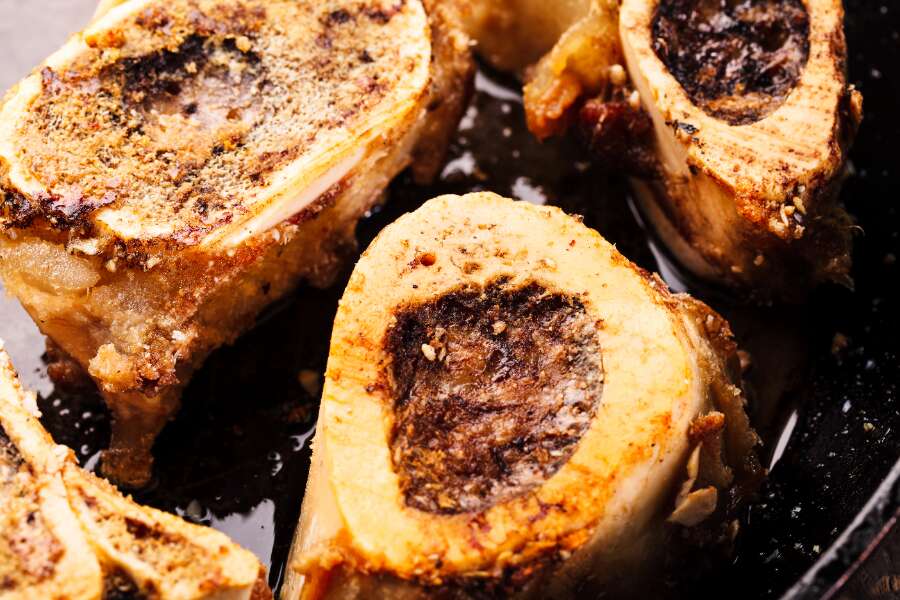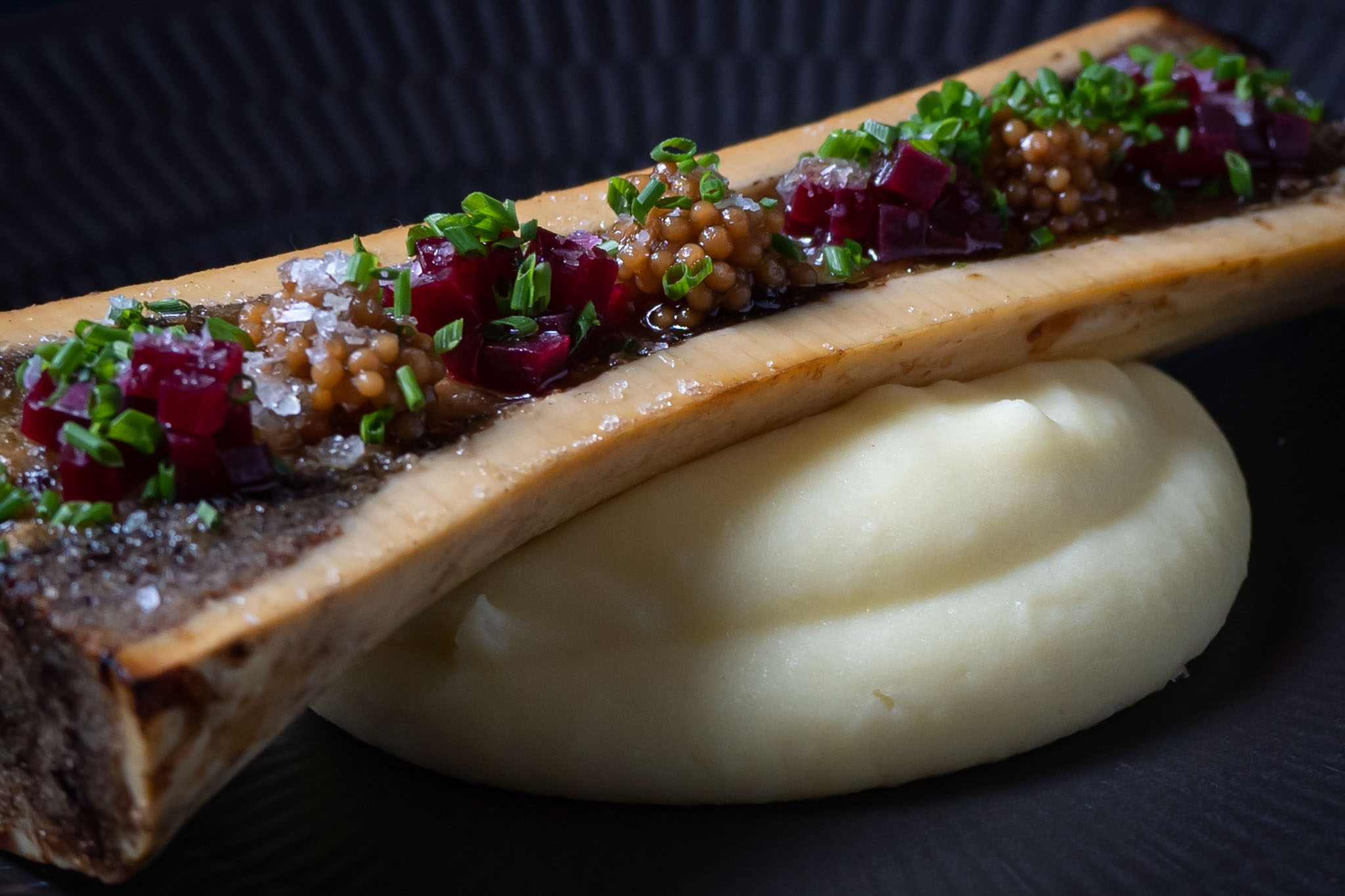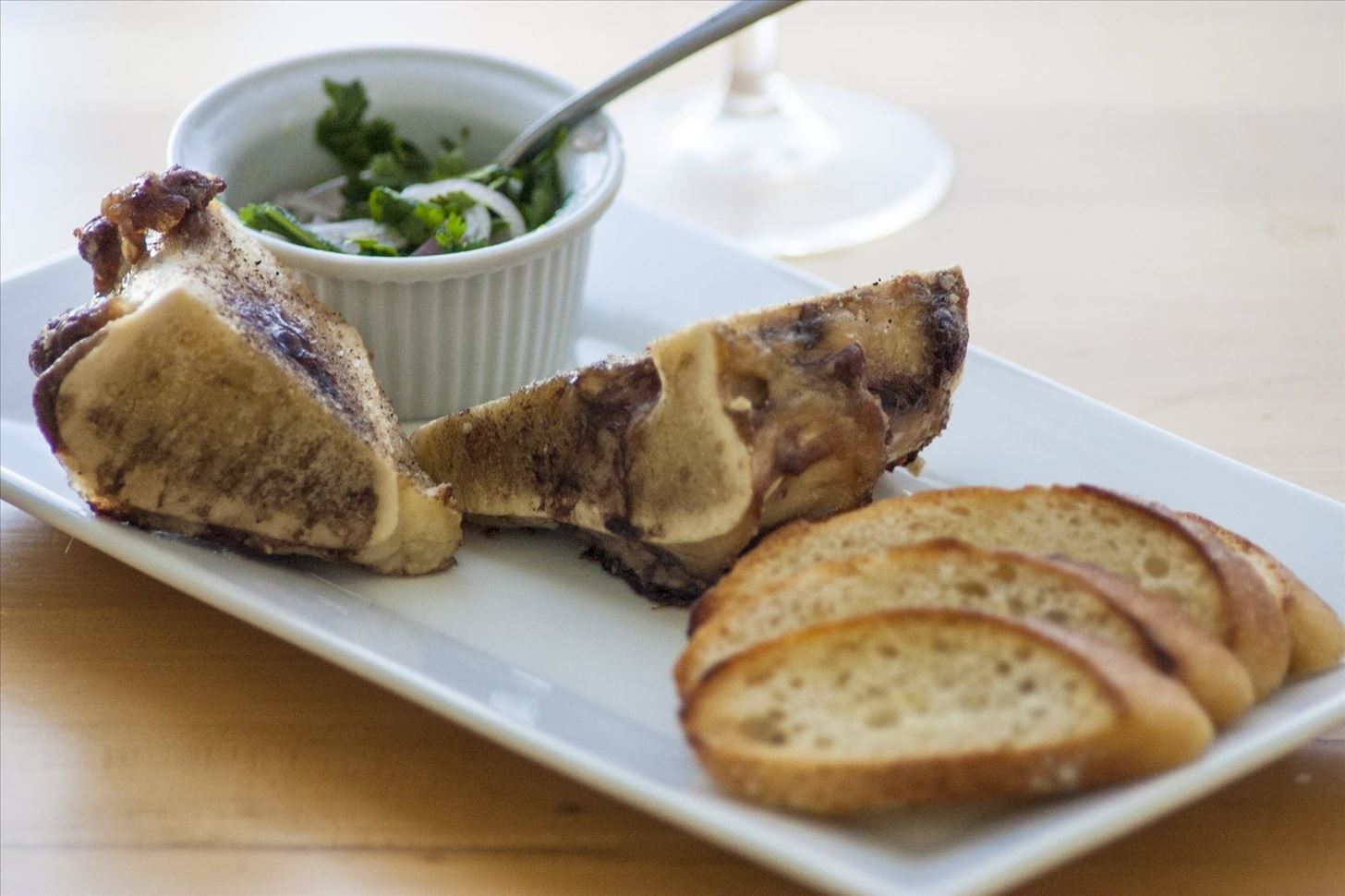Introduction
Overview Of Bone Marrow And Its Taste
Bone marrow is a prized culinary ingredient known for its rich flavor and creamy texture. It is the soft, fatty tissue found inside the bones of animals, typically beef, veal, or lamb. When cooked, bone marrow takes on a unique taste that is both savory and rich, with a hint of sweetness. Its flavor can be compared to umami, which is often described as a savory and meaty taste.
The Significance Of Understanding The Taste Of Bone Marrow
Understanding the taste of bone marrow is important for both food enthusiasts and home cooks. It allows you to fully appreciate the flavors and versatility that bone marrow brings to the table. By experimenting with different cooking techniques, you can unlock the full potential of bone marrow and create dishes that are truly exceptional.
Knowing the taste of bone marrow also allows you to pair it with complementary flavors and ingredients. Its savory richness and buttery texture make it a fantastic accompaniment to dishes like steaks, roasts, and even pasta. By understanding its taste, you can create well-balanced and flavorful dishes that will impress your guests.
In conclusion, bone marrow offers a mesmerizing taste experience that is unlike any other. Its burst of savory richness, combined with a hint of sweetness, creates a flavor profile that is both satisfying and irresistible. Whether you are a seasoned foodie or an adventurous home cook, bone marrow is a culinary adventure waiting to be explored. So, next time you come across bone marrow, don’t hesitate to give it a try and let your culinary creativity soar.

The Taste Of Bone Marrow
Flavor Profile Of Bone Marrow
Bone marrow is known for its delicate and complex flavor profile. When cooked, it offers a burst of savory richness with a hint of sweetness. The taste can be compared to umami, which is often described as a savory and meaty flavor. This unique combination of flavors makes bone marrow a versatile ingredient that can enhance a variety of dishes.
Rich Umami Flavor And Creamy Texture
Bone marrow has a rich umami flavor that is both savory and satisfying. Its creamy texture adds a luxurious mouthfeel to any dish it is added to. When prepared correctly, bone marrow melts in your mouth, creating a decadent and indulgent experience.
Here is a comparison table highlighting some key characteristics of bone marrow:
| Taste | Texture |
|---|---|
| Savory | Creamy |
| Umami | Rich |
| Sweet undertones | Luxurious |
The rich umami flavor and creamy texture of bone marrow make it a sought-after delicacy. Whether you enjoy it on its own, spread on bread, or used as a garnish, bone marrow adds depth and complexity to any dish.
In conclusion, bone marrow offers a unique taste experience that is both indulgent and satisfying. Its burst of savory richness, combined with a hint of sweetness, creates a flavor profile that is truly exceptional. Whether you are a culinary enthusiast or a home cook looking to elevate your dishes, bone marrow is a versatile ingredient that should not be overlooked. So, the next time you have the opportunity, don’t hesitate to explore the world of bone marrow and discover the amazing flavors it has to offer.
Factors Affecting The Taste
Preparation Methods And Cooking Techniques
The taste of bone marrow can be influenced by the various preparation methods and cooking techniques used. Some popular cooking techniques for bone marrow include roasting, grilling, and braising. These methods can enhance the flavor and texture of the marrow, resulting in a more delicious and enjoyable dining experience. The length of cooking time also plays a role, as a longer cooking time can intensify the flavors and create a richer taste.
Influences Of Seasonings And Accompaniments
The choice of seasonings and accompaniments can greatly impact the taste of bone marrow. Seasonings such as herbs, spices, and sauces can enhance the flavors and add depth to the dish. For example, a sprinkle of sea salt and a squeeze of lemon juice can help to balance the richness of the marrow. Accompaniments such as crusty bread or roasted vegetables can complement the creamy texture and add additional layers of flavor. The choice of wine or other beverages can also influence the taste experience, as certain pairings can enhance the flavors and create a harmonious balance on the palate.
In summary, the taste of bone marrow is influenced by various factors such as the preparation methods, cooking techniques, seasonings, and accompaniments. The delicate and complex flavor profile of bone marrow, with its burst of savory richness and hint of sweetness, makes it a sought-after culinary delicacy. By experimenting with different cooking techniques and flavors, you can unlock the full potential of bone marrow and create unique and memorable dining experiences. Whether you are a professional chef or an amateur cook, don’t be afraid to explore the world of bone marrow and discover the endless possibilities it offers.
Cooking And Preparation Techniques
Roasting Bone Marrow For Enhanced Flavor
Roasting is a popular and straightforward method for cooking bone marrow. It involves placing the marrow bones in the oven and cooking them at a high temperature. This technique allows the marrow to develop a rich flavor and a creamy texture. Here are the steps to roast bone marrow:
- Preheat your oven to 450°F (232°C).
- Place the marrow bones on a baking tray or a roasting pan, making sure they are spaced apart.
- Roast the bones for about 15-20 minutes, or until the marrow is soft and easily scooped out with a spoon.
- Once cooked, remove the bones from the oven and let them rest for a few minutes before serving.
Roasted bone marrow is delicious on its own or can be spread on toasted bread slices for a flavorful appetizer or snack. The richness and nutty undertones of the marrow are enhanced through roasting, creating a delightful culinary experience.
Broiling And Grilling Methods For Different Taste Experiences
Broiling and grilling are alternative cooking techniques that can also be used to prepare bone marrow. These methods offer slightly different taste experiences, making them worth exploring.
- Broiling: To broil bone marrow, preheat your broiler and place the marrow bones on a broiler pan or a grill rack. Cook the bones for about 10-15 minutes, or until the marrow is soft and bubbling. Broiling gives the marrow a slightly caramelized and smoky flavor.
- Grilling: Grilling bone marrow involves cooking the bones directly over an open flame or on a grill. This method adds a charred and smoky essence to the marrow. Grill the bones for approximately 10-15 minutes, turning occasionally, until the marrow is cooked to your desired consistency.
Both broiling and grilling techniques offer a unique taste profile, allowing you to experiment and discover your preferred flavor. Whether you prefer the caramelized notes of broiled marrow or the smoky nuances of grilled marrow, both methods provide a delicious and satisfying dining experience.
By trying out different cooking and preparation techniques, you can bring out the best flavors of bone marrow and enjoy its delicate, umami-rich taste. From roasting to broiling and grilling, each method offers a distinct flavor profile that can be further enhanced with the right seasonings and accompaniments. Don’t be afraid to explore and create your own culinary masterpiece with marrow bones – your taste buds will thank you!

Culinary Uses And Pairings
Bone Marrow As A Stand-alone Dish
Bone marrow is not only a popular ingredient, but it can also be enjoyed as a stand-alone dish. Its rich umami flavor and creamy texture make it a luxurious delicacy. Simply prepare the bone marrow using techniques like roasting, broiling, or grilling, and serve it on its own with a sprinkle of sea salt or herbs. This allows the natural flavors of the marrow to shine and provides a decadent experience for the palate.
Integrating Bone Marrow Into Recipes
Bone marrow can also be incorporated into various recipes to elevate their flavor and add a touch of decadence. Here are some ideas for using bone marrow in your cooking:
- Soups and stocks: Adding bone marrow to your homemade soups or stocks can enhance their richness and depth of flavor. The marrow will melt and create a velvety texture that infuses the entire dish with a savory note.
- Sauces and gravies: Whisking in some bone marrow into your sauces or gravies can give them a luxurious mouthfeel and a savory taste. It can add a depth of flavor that takes your dishes to a whole new level.
- Pasta dishes: Tossing cooked bone marrow with freshly cooked pasta can create a rich and indulgent sauce. The creamy texture of the marrow coats the noodles beautifully, resulting in a luxurious and satisfying pasta dish.
- Compound butters: Mixing bone marrow with softened butter and herbs creates a flavor-packed compound butter that can be used to elevate any dish. Spread it on grilled steaks or roasted vegetables for an added layer of richness.
- Spread on toast: Spread roasted bone marrow on toasted bread slices for a simple yet delicious appetizer or snack. The creamy marrow and nutty flavors pair perfectly with the crunchy bread.
Conclusion
Experimenting with bone marrow in your cooking can introduce you to a world of rich flavors and indulgent textures. Whether enjoyed on its own or incorporated into various recipes, bone marrow adds a luxurious touch to any dish. Don’t shy away from trying different cooking techniques and exploring unique pairings to discover your favorite way to enjoy this exquisite ingredient.
Cultural Perspectives
Historical And Cultural Significance Of Bone Marrow Consumption
Bone marrow has a long history of consumption in various cultures around the world. It has been prized for its rich flavor and nutritional benefits. In many traditional societies, bone marrow was considered a precious and valuable food source, often reserved for special occasions or shared amongst the community.
In some cultures, bone marrow consumption is even associated with ritualistic practices, symbolizing strength, vitality, and connection to ancestral heritage. It has been used as a culinary tradition to honor ancestors and celebrate important milestones.
Traditional Dishes Featuring Bone Marrow
Bone marrow plays a significant role in the culinary traditions of many countries. Here are a few examples of traditional dishes that feature bone marrow:
- Osso Buco: This Italian dish is made with cross-cut veal shanks braised in a flavorful broth. The marrow inside the bone melts during the cooking process, adding richness and enhancing the overall flavor of the dish.
- Pho: A popular Vietnamese soup, pho often includes beef bones simmered for hours to create a flavorful broth. The marrow in the bones gives the soup a velvety texture and adds depth to the broth.
- Pâté de Campagne: A classic French charcuterie dish, pâté de campagne often incorporates bone marrow for added richness and flavor. The marrow is mixed with other ingredients such as ground pork or chicken liver to create a smooth and decadent spread.
- Moroccan Tagine: In Moroccan cuisine, bone marrow is often added to slow-cooked tagines, such as lamb or beef tagine. The marrow infuses the sauce with its creamy texture and enhances the overall aroma and taste of the dish.
These are just a few examples of the many traditional dishes that celebrate the unique flavors and textures of bone marrow. Exploring these culinary traditions can provide a deeper understanding and appreciation for the cultural significance of bone marrow consumption.
In conclusion, bone marrow not only offers a delicious culinary experience but also holds historical and cultural significance in various societies. Incorporating bone marrow into your cooking allows you to explore new flavors and traditions, adding depth and richness to your dishes. Whether enjoyed on its own or as an ingredient in traditional recipes, bone marrow offers a unique and indulgent dining experience.
Health Benefits
Nutritional Value Of Bone Marrow
Bone marrow is not only rich in flavor but also packed with essential nutrients. Here are some key nutrients found in bone marrow:
- Vitamins: Bone marrow contains a variety of vitamins, including vitamin A, vitamin K2, and various B vitamins such as B12, thiamin, and riboflavin.
- Minerals: It is a good source of essential minerals like calcium, phosphorus, magnesium, and iron.
- Protein and healthy fats: Bone marrow is also a source of high-quality protein and healthy fats, including omega-3 fatty acids.
Potential Benefits For Joint Health And Immune System
In addition to its nutritional value, bone marrow may offer several health benefits:
- Joint health: Bone marrow is rich in glucosamine, a compound that has been shown to help relieve joint pain and reduce inflammation in the joints. It may be beneficial for individuals with osteoarthritis or other joint conditions.
- Immune system support: The nutrients found in bone marrow, such as vitamins and minerals, can contribute to a healthy immune system. They support the production and function of immune cells and promote overall immune system function.
Overall, bone marrow provides a unique combination of flavor and nutrition. Its rich content of vitamins, minerals, protein, and healthy fats makes it a valuable addition to a well-balanced diet. Whether enjoyed on its own or incorporated into traditional recipes, bone marrow offers a delicious way to support joint health and boost your immune system.

Controversies And Concerns
Safety Considerations When Consuming Bone Marrow
When it comes to consuming bone marrow, there are a few safety considerations to keep in mind:
- Raw consumption: While some enjoy consuming bone marrow raw, there is a risk of bacterial contamination. It is recommended to cook bone marrow thoroughly to eliminate any potential health risks.
- High cholesterol content: Bone marrow is high in cholesterol, which can be a concern for individuals with high cholesterol levels or certain health conditions. It is advisable to consume bone marrow in moderation as part of a balanced diet.
- Sourcing and quality control: It is important to ensure that the bone marrow you consume comes from reputable sources and is of high quality. This can help reduce the risk of contamination and ensure the safety of the product.
Ethical Debates Surrounding Animal Marrow Consumption
The consumption of bone marrow, especially from animals, has sparked ethical debates. Some concerns raised include:
- Animal welfare: The process of obtaining bone marrow often involves the slaughter of animals. Some argue that this raises ethical questions regarding animal welfare.
- Sustainable practices: The demand for bone marrow has led to concerns about sustainability. It is important to consider the impact of this consumption on animal populations and the environment.
- Cultural and personal beliefs: Different cultures and individuals may have different beliefs and values surrounding the consumption of bone marrow. It is crucial to respect these perspectives and engage in informed discussions about ethical choices.
It is essential to recognize and consider these controversies and concerns when deciding whether to consume bone marrow. Individuals should weigh the nutritional benefits against ethical and safety considerations to make an informed decision that aligns with their values and health goals.
Controversies And Concerns
Safety Considerations When Consuming Bone Marrow
When consuming bone marrow, it is important to consider the following safety considerations:
- Raw consumption: While some enjoy consuming bone marrow raw, there is a risk of bacterial contamination. It is recommended to cook bone marrow thoroughly to eliminate any potential health risks.
- High cholesterol content: Bone marrow is high in cholesterol, which can be a concern for individuals with high cholesterol levels or certain health conditions. It is advisable to consume bone marrow in moderation as part of a balanced diet.
- Sourcing and quality control: It is important to ensure that the bone marrow you consume comes from reputable sources and is of high quality. This can help reduce the risk of contamination and ensure the safety of the product.
Ethical Debates Surrounding Animal Marrow Consumption
The consumption of bone marrow, especially from animals, has sparked ethical debates. Some concerns raised include:
- Animal welfare: The process of obtaining bone marrow often involves the slaughter of animals. Some argue that this raises ethical questions regarding animal welfare.
- Sustainable practices: The demand for bone marrow has led to concerns about sustainability. It is important to consider the impact of this consumption on animal populations and the environment.
- Cultural and personal beliefs: Different cultures and individuals may have different beliefs and values surrounding the consumption of bone marrow. It is crucial to respect these perspectives and engage in informed discussions about ethical choices.
It is essential to recognize and consider these controversies and concerns when deciding whether to consume bone marrow. Individuals should weigh the nutritional benefits against ethical and safety considerations to make an informed decision that aligns with their values and health goals.
Conclusion
Summary Of Bone Marrow Taste Experience
Bone marrow offers a burst of savory richness reminiscent of umami with a hint of sweetness. It has a buttery and creamy texture, thanks to its high-fat content. Each bite of bone marrow offers a full-bodied and satisfying experience that leaves you craving more.
Encouragement To Explore And Appreciate This Unique Delicacy
Whether you are a seasoned foodie or an adventurous home cook, bone marrow’s mesmerizing taste and versatility are not to be missed. Indulge in its complex flavors, experiment with different techniques, and let your culinary creativity bring bone marrow to new heights. Its rich and unique flavors offer a one-of-a-kind culinary adventure that can elevate any dining experience.
FAQ: What Does Bone Marrow Taste Like? Rich Marrow Musings
Q: What exactly is bone marrow?
A: Bone marrow is a soft, spongy tissue found inside the bones of animals, including humans. It plays a crucial role in producing blood cells and storing fat.
Q: Can bone marrow be eaten?
A: Yes, bone marrow can be eaten and is considered a delicacy in many cuisines around the world. It is commonly used in dishes such as bone marrow soup, roasted bone marrow, or spread on toast.
Q: What does bone marrow taste like?
A: The taste of bone marrow is often described as rich and buttery, with a slightly meaty and savory flavor. It has a luxurious and melt-in-your-mouth texture that is highly appreciated by food enthusiasts.
Q: How is bone marrow prepared and served?
A: The most common way to prepare bone marrow is by roasting the bones in the oven. Once the bone marrow is cooked, it can be scooped out and enjoyed as is or spread onto crusty bread. It can also be added to soups or used as a flavorful base for sauces and gravies.
Q: Is bone marrow nutritious?
A: Yes, bone marrow is highly nutritious, rich in healthy fats, proteins, and essential minerals like iron and calcium. It is also a good source of collagen, which is beneficial for joint health, skin elasticity, and gut health.
Q: Are there any health benefits to consuming bone marrow?
A: Consuming bone marrow can have several health benefits. It contains valuable nutrients that support bone health, boost the immune system, aid in digestion, and promote healthy skin. Additionally, the healthy fats found in bone marrow can help improve cardiovascular health.
Q: Can anyone eat bone marrow?
A: While bone marrow is generally safe for consumption, it is recommended to consult with a healthcare professional if you have any specific dietary restrictions or medical conditions. It is also important to ensure that the bone marrow is properly cooked to minimize the risk of foodborne illnesses.
Q: Where can I find bone marrow to try it?
A: Bone marrow can be found in specialty butcher shops, high-end restaurants, or it may even be available at your local grocery store. If you’re interested in trying bone marrow, you may want to inquire with these establishments or explore recipes to prepare it at home.
Q: Are there any alternatives to bone marrow?
A: If you’re looking for a similar taste and texture without consuming bone marrow, you could try using butter or ghee as a substitute in recipes. While it may not be an exact match, these options can provide a rich and flavorful element to your dishes.

We are family-owned and operated. We love to serve coffee to our community that loves to drink it! We opened in December 2017 and are always expanding and evolving. We strive to offer a relaxing and comfortable gathering place for our customers. We not only serve delicious coffee but a full breakfast and lunch menu as well. You can also order ONLINE through our website or call ahead and pick it up right at our drive-thru window! We have a wide range of delicious baked goods, sweet treats, and a gift shop coming soon! Stop in and let us serve you!!